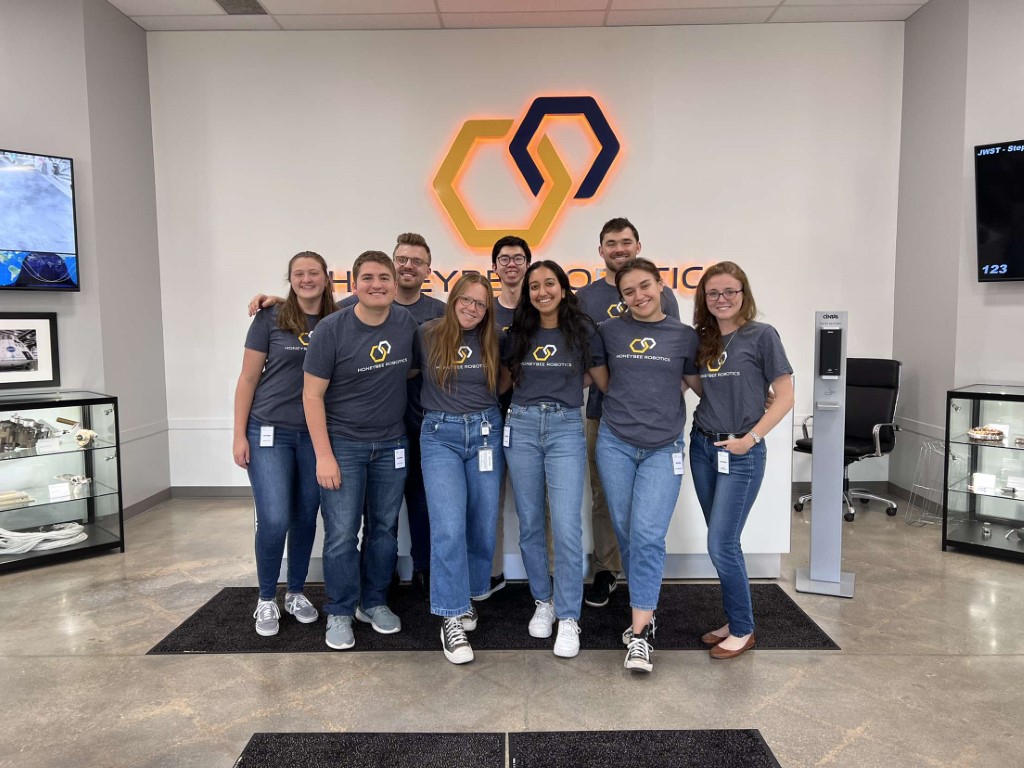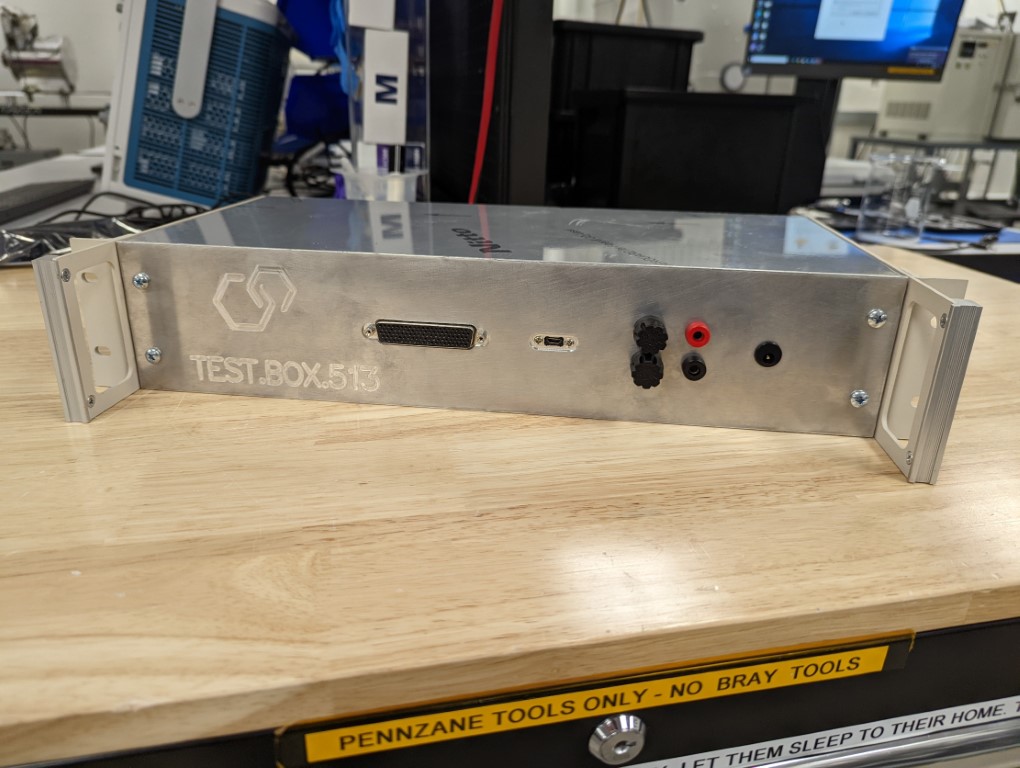Work Experience
Honeybee Robotics
May 2022 - August 2022
My junior summer I worked as a test intern at Honeybee Robotics at their motion control division in Longmont, Colorado. Throughout this internship I worked on a number of projects across a different areas, from thermal vacuum fixtures for flight hardware to in house testing firmware and ground support equipment. Below I have highlighted a couple of noteworthy projects from the great experience I had at Honeybee.
As Honeybee planned to design and produce more powerful actuators, the test department needed to be able to run more powerful motors to test these new products. Using a commercial high voltage motor driver IC, over the course of the summer I coded firmware for a microcontroller to communicate and control the IC over SPI as well as used python to build a GUI for easy control by technicians and others running the tests. Through this project I learned a lot about microcontroller coding as well as industrial communication protocols like SPI and MODBUS.
While designing a high precision satellite actuator, a team at Honeybee needed to know if a harmonic gearbox used in a previous product could be used in this application as well. Tasked with characterizing the gearbox, I built and constructed a test platform using custom parts and a high precision stepper motor and encoder to measure the outputs and simulate the desired customer requirements. I also coded the required python programs to both execute the tests as well as process the millions of data points gathered. From my reports and data the team was able to better answer the customer on what the final specifications of the actuator would be.
For one product line at Honeybee, an existing test was used to prescreen reed switches used in the actuator. Since the initial tester had been built, the reed switches saw roughly 50% failure rates, and as the tester was used more, the failure rate raised to 90%. With the price of reed switches increasing for each batch, I worked with another intern to redesign the tester. Reusing spare assembly components, we came up with a new tester that resembled the actual flight hardware much better than the previous tester and had less room for user misalignment when testing. The new tester was also improved to test faster and be easier for those using it to quickly get the results for the reed switch. After building the new tester, the reed switch failure rate has fallen to 10%, helping the company save on component costs. Throughout my internship, no reed switches that were passed on prescreen test have failed in the final unit testing as well.
One of my first projects at Honeybee was the completion of a box used to test pinouts. Using a 104 D-sub connector, the box allowed users to easily plug in components and a desktop multimeter using banana plugs. An excel file containing the pins that need to be tested and acceptable values was then input and the box would automatically run all the listed tests. For this box I designed the front panel and external connections, while also updating the firmware of the box and python GUI code needed for the end user.
Images

